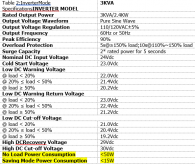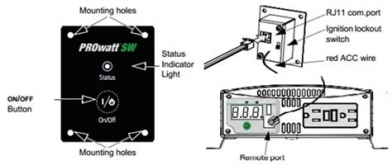wade0000
New Member
- Joined
- Oct 30, 2020
- Messages
- 66
Hello,
Quick question.
I have a 24V 3000W pure sine wave inverter powering two 15A circuits.
The inverter itself uses about 30W running a 500W load.
There are some times that there is no load. Does the inverter still consume the same amount of power then? Or significantly less because it is proportional to the load? It's hard to tell since my usage watt meters are downstream after the inverter.
Thanks in advance.
P.S. - Ultimately, I'd also like to have an automatic switch that would switch to AC if the battery dropped to a preset level AND turned the inverter off (if it is using significant power just to idle)
Quick question.
I have a 24V 3000W pure sine wave inverter powering two 15A circuits.
The inverter itself uses about 30W running a 500W load.
There are some times that there is no load. Does the inverter still consume the same amount of power then? Or significantly less because it is proportional to the load? It's hard to tell since my usage watt meters are downstream after the inverter.
Thanks in advance.
P.S. - Ultimately, I'd also like to have an automatic switch that would switch to AC if the battery dropped to a preset level AND turned the inverter off (if it is using significant power just to idle)




